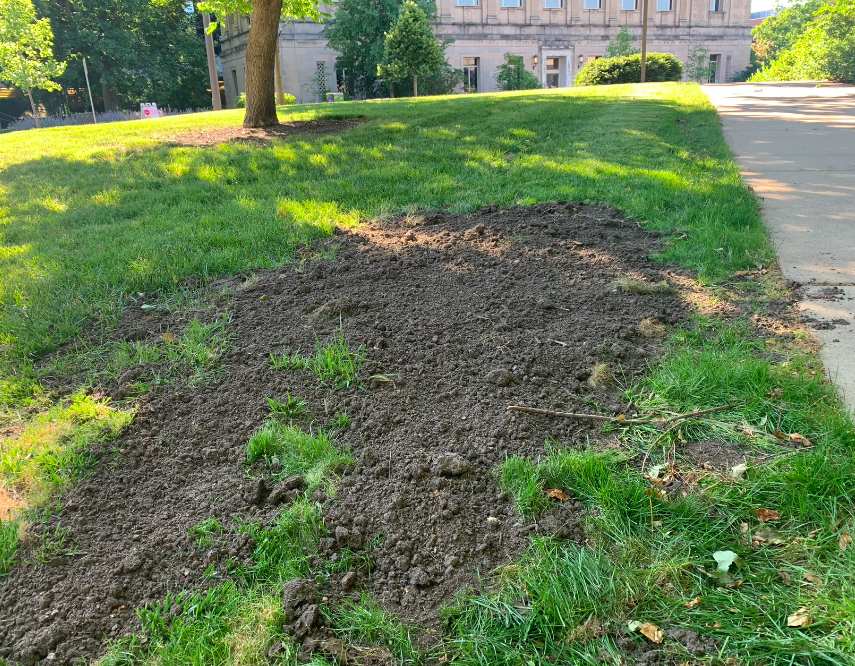President Wendy Wintersteen calls actions of W.T. Hornaday ‘indefensible, reprehensible and racist’
A rock plaque was placed on the Iowa State campus south of LeBaron Hall in 1927 to highlight W.T. Hornaday’s work as a conservationist. The plaque was removed June 11, 2020, after it was uncovered that Hornaday also featured Ota Benga, a Congolese pygmy and a Black man, in the Monkey House of the Bronx Zoo.
June 11, 2020
Iowa State President Wendy Wintersteen creates a committee for a formal renaming policy and process for current plaques and historic monuments on campus.
On Thursday, Wintersteen released a statement regarding the history of a plaque that was dedicated to the work of William Temple Hornaday, an Iowa State alumnus and the first director of the Bronx Zoo.
Hornaday also featured Ota Benga, a Congolese pygmy and a Black man, in the Monkey House of the Bronx Zoo. During the weekend in September of 1906, Benga lived in the Monkey House with an orangutan as an exhibit that was set up by Hornaday.
A rock plaque was placed on the Iowa State campus south of LeBaron Hall in 1927. On Wednesday, a Twitter thread highlighted the past of Hornaday.
Hornaday attended Iowa State from March 1872 to November 1873, according to Wintersteen’s statement, and received an honorary master’s degree in 1903. In 1927, a plaque was placed on campus in recognition of Hornaday’s work as a conservationist.
“Hornaday’s actions and attitudes that he expressed in response to the controversy are indefensible, reprehensible and racist,” Wintersteen said in a statement. “I have asked ISU Parks Library to look into the stated reasons for the creation of the plaque in 1926 so that we can understand it historically as a part of our own campus history.”
The exhibit was confronted by many protesters which led Hornaday to suspend it, though Wintersteen said he “appeared unapologetic about the incident.”
“This issue highlights a broader question about the need for a policy and process to more systematically address questions about historical naming and honors,” Wintersteen said. “I have asked Vice President for Diversity and Inclusion Reginald Stewart and Faculty Senate President Carol Faber to co-chair a committee to review the re-naming principles at Stanford and other universities and make a recommendation for a formal Iowa State University re-naming policy and process. The policy developed will allow us to examine the Hornaday plaque and other historic naming and honoring decisions in a consistent and well-thought-out process with well-defined standards that can be applied when issues arise.”
All of the honorific namings on campus will be under review by the University Library, who will recommend if there are any other names that should be changed under the new renaming policy once it has been adopted.
“As an interim action, the bronze plaque will be removed and placed in the Parks Library Archive,” Wintersteen said. “Additionally, a website is being established on the University Library page to provide links to information and resources for those interested in this material. Once the formal renaming policy has been adopted, a permanent decision will be made regarding the Hornaday plaque and the conferral of Hornaday’s honorary degree will be reconsidered.”

















